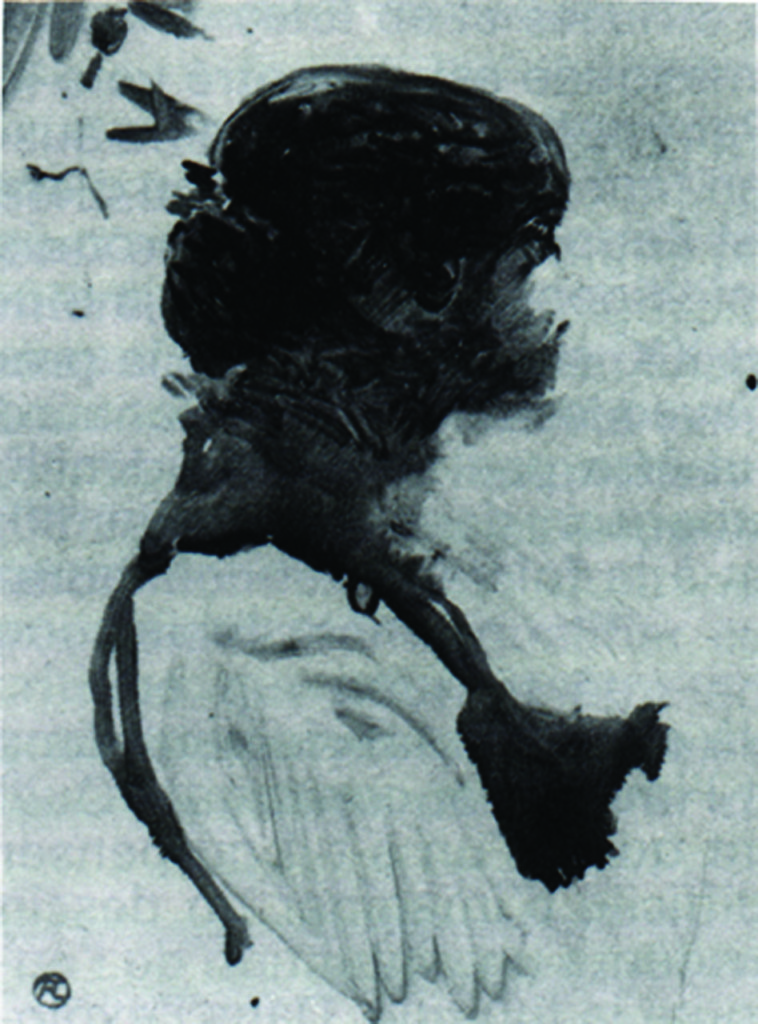A tiny bit of unpainted canvas
The portrait of Ambroise Vollard by Cézanne, now located in the Petit Palais in Paris, took one hundred and five intense, emotion packed sittings to produce. At first sight, it seems complete. But on closer inspection, we find that, even after all those hours of concentrated effort, there is a tiny patch of unpainted canvas, situated in the area where a knuckle should normally be.
.

.
To assess its significance, let us place scarcely visible area of raw canvas in the context of Antonio Tapies’ comment on Van Gogh’s chair. In the Spanish artist’s view, such an everyday object as a chair would be “hardly worth looking at”, if it were not for the richness of its associations and connotations. What made it such a rich subject for a painting was that it meant so much for Van Gogh, and because it resonated with our mental picture of him. Similarly, we might be inclined to think that nothing could be less interesting than a tiny patch of bare canvas. How could something so minuscule be seen as anything but a blemish? How could an absence of paint be worth looking at?
.

.
Cézanne asks for forgiveness
Nor would there be any question of excusing the artist on the grounds of it being a deliberate mistake, analogous to the Allah-placating deviations from symmetry found in the designs of the Islamic carpet makers. In a contrite letter to Ambroise Vollard, sent from his home situated hundreds of miles away in the South of France, Cézanne explained why he had not turned up to his Paris studio for the 106th sitting. Hoping that his patron would understand and forgive him, he admitted that he had fled from the Paris because even he could not face the 100 or more additional sittings that it might take to rectify matters.
Error of judgement
The simple truth that Cézanne had to face up to was that he had committed a serious error of judgement. By leaving this patch to last, he had painted himself into a corner: He would not longer be able to produce a colour for it that would be the right degree of colour/lightness difference relative to the immediately neighbours. The only way of rectifying the situation would require him to have change these. But that would not be all. He would then have to change all the colours adjacent to them. Indeed, he would have to continue modifying until every single one of the colours on the picture-surface had been given the right relationship with all the other colours. Only by dong so would he be able to meet his self-imposed criteria of never repeating a colour.
A new significance
As well as being a very human story, Cezanne’s failure to complete his painting provides an insight into the degree of perfectionism and rigour which he brought to his work. When we realise this, the patch of bare canvas takes on a new significance. It becomes a doorway into the artist’s mind and a telltale sign of his lofty ambition. In these ways, it reveals itself one of the most telling and significant patches of colour in the history of painting. Surely Tapies would have seen it in this light?
Other Posts from “Having Fun with Creativity”, Chapter 10 of “Fresh Perspectives on Creativity”
- Playful fancies as a stimulus to creativity
- An inspirational story: a child draws a potato
- The case for being a flat-earther:
- The nature of truth
- Tapies advocates playing games
- Cézanne fall short
Other Posts from “Fresh Insights into Creativity”
Click here for list of all currently available Posts
- The information on the story about Cézanne recounted in this Post comes mainly from Ambroise Vollard’s book on the artist.



